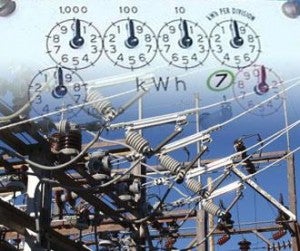 We’ve discussed the potentially grave impacts of the Texas Energy Crunch in a number of our previous blog posts. Time and time again, we repeat that the cheapest, cleanest and most reliable energy resource is the energy we save through energy efficiency. But our energy efficiency programs in Texas are still modest compared to other states. Beyond politics, there is another key issue limiting our state’s energy savings: Texas does not treat energy efficiency as a ‘resource.’
We’ve discussed the potentially grave impacts of the Texas Energy Crunch in a number of our previous blog posts. Time and time again, we repeat that the cheapest, cleanest and most reliable energy resource is the energy we save through energy efficiency. But our energy efficiency programs in Texas are still modest compared to other states. Beyond politics, there is another key issue limiting our state’s energy savings: Texas does not treat energy efficiency as a ‘resource.’
Traditionally, energy efficiency is left ‘invisible’ to utilities and grid planners—so they lose count of its many benefits. Treating energy efficiency as a resource, instead, puts it on a level playing field with other energy resources, such as power plants. This allows utilities to realize the unique benefits energy efficiency has over other energy sources.
Energy efficiency can reduce harmful greenhouse gases, save people money and create jobs – and it is extremely competitive with other energy resources. When the energy saved through efficiency is weighed against new energy resources, efficiency upgrades to buildings and homes generally weigh in at just one-third of the cost of building a new fossil-fuel power plant. On top of that, energy efficiency upgrades can eliminate the need to install or replace other expensive electric grid equipment. This cost-savings is one of the many benefits generally overlooked by utilities and electric grid planners.
Part of what prevents electric grid planners from counting efficiency as a resource in Texas is the way that the energy market is structured. When Texas deregulated its energy market in 1999, the aim was to increase options for customers and lower prices. Efficiency programs were not included in the new market structure. Instead, they were left for transmission and distribution utilities (TDUs), the “wires” companies that deliver electricity from power plants to customers, to manage. With efficiency left out of the restructured energy market, the Public Utility Commission of Texas (PUC) and other state leaders tend to view efficiency programs as subsidies that exist outside of the market.
According to a recent report by the South-central Partnership for Energy Efficiency as a Resource (SPEER), Texas can give energy efficiency a more equal footing with conventional fossil fuel resources, such as power plants, by allowing it to bid into the state’s wholesale electricity market. The market is administered by the Electric Reliability Council of Texas (ERCOT), which oversees the operations and planning for Texas’ electric grid. Moving energy efficiency to the domain of ERCOT would allow it to participate as a resource in ERCOT’s operation of the electric grid. This would open up more competition in the market and spur new investment to help lower energy prices.
The notion of moving energy efficiency programs into the electricity market is an interesting idea. The Texas PUC is currently debating whether changes should be made to the state’s electricity market structure to overcome Texas’ ongoing energy crunch, or what electricity planners refer to as “resource adequacy” issue (i.e. not having enough electric supply to meet the greatest demand for energy and definitively avoid a blackout). One option is to move away from an energy-only market (our current structure) by adding a capacity market. In an energy-only market, power plants are paid only for the energy they actually produce. Adding a capacity market would also pay power plants for the maximum amount of energy they could produce, if called upon to do so.
Capacity markets put an obvious price on the cost of adding new generation resources. Because of this feature, it’s usually easier to understand the benefits of demand-side resources in a capacity market. A demand-side resource, also known as a customer-side resource, is simply a source of electric power owned and operated by an electric customer. The most common example of a demand-side resource is rooftop solar panels. Energy saved through efficiency upgrades, such as better insulation and more efficient heating and air conditioning systems, and through demand response (which rewards those who reduce electricity during peak times) both count as demand-side resources. While a capacity market makes it easier to include these resources, it can also be expensive to implement. A capacity market pays energy generators for merely existing, and these costs could potentially be passed on to customers. It’s no surprise that a switch to this market structure has seen resistance in Texas.
A third alternative is a capabilities market, which emphasizes reliability and flexibility – not just the ability to produce energy. This type of market would be able to tap into resources that are much more flexible in responding to rapid changes in energy demand. The Regulatory Assistance Project (RAP) has developed a framework that examines what a capabilities market would look like. RAP suggests that Texas will need a more flexible market structure that can incorporate demand-side resources to meet its electricity needs as the Texas Energy Crunch increases.
Working energy efficiency into the electricity market is a complicated issue, but it’s also an important one. The electric infrastructure in this country is in dire need of an upgrade. Texas, in particular, is grappling with serious resource adequacy issues in addition to a multi-year drought and extreme weather – both of which are expected to get worse due to climate change. The PUC and ERCOT have made it clear that they want to act. Now is the time to be thoughtful and bold—to prepare the state for what’s coming. Whatever market structure or changes Texas leaders decide to adopt, energy efficiency should have a seat at the table as an equal.











One Comment
I fully agree that the most energy efficient environment is one where less energy is used during peak times and overall. That means motivating companies and residential customers to modify behavior.
The utilities in Texas today receive funding for energy efficiency via the EECRF or similar regulatory-driven mechanisms. Is this money being spent wisely to educate consumers and promote energy efficiency? Some REPs are engaging in their own forms of energy efficiency as a resource through customer education. While some may consider it lip service, the education and communication from REPs often appears to be more substantive than utility-provided education. Some REPs also engage in energy efficient actions by creating price plans that support peak load reduction, e.g. Time of Use or Peak/Off-Peak pricing.